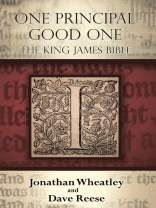This book speaks to the majesty of the King James Bible, in both its literary contribution to the English language and how it distinguishes itself from the previous English translations and those that have been attempted since. The authors address the doctrines of Inspiration and Preservation; and that by faith, believe that only the King James Bible is worthy of being called the inspired/preserved word of God in the English language. The authors cover the Process of Bible translation by committee and the rules by which they were provided as guidance by the king at the Hampton Court conference. Specifically, the doctrinal impact of the Third Rule whereby the translators were to keep the old Ecclesiastical words such as ‚Church‘ not to be translated as ‚Congregation.‘ Other words to be used were ‚Charity‘ in addition to ‚Love‘; ‚Baptisms, ‚ as well as ‚Washings‘; and the distinction between ‚Covenant‘ and ‚Testament‘ is clearly seen in the context where the words are used.
In addition to the doctrinal import, there is considerable attention given to the printing technology of the fourteenth to sixteenth centuries and a dissertation on the artwork of the first edition, printed in 1611. The practical results of preaching the King James Bible in places like the Philippines and other foreign lands are presented with plentiful illustrations and examples. Lastly, the authors have included the Epistle Dedicatory and Translators to the Reader that were provided in earlier editions of the King James Bible, but sadly, seldom printed in the newer editions.
2







![Cover von Brian Schrag & Julisa Rowe: Community Arts for God's Purposes [Chinese] 貼近神心意的社群藝術 Cover von Brian Schrag & Julisa Rowe: Community Arts for God's Purposes [Chinese] 貼近神心意的社群藝術](https://static.worldofdigitals.com/thumb_webp/740/9781645083740.webp)




